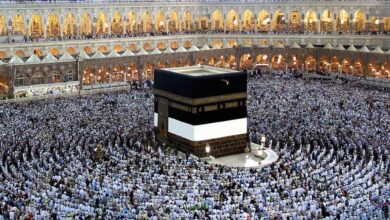5 Largest Structures in the World Designed to be Earthquake Resistant

Unless you’re an engineer, you can never beat the force of nature. We will now take a closer look at 5 large buildings designed to withstand major earthquakes.
Earthquakes are one of nature’s most destructive forces. When an earthquake occurs, structures can be severely damaged.
The earthquake disaster we experienced in Turkey on February 6 is the biggest proof of this.
Therefore, seismic loads must be taken into account when designing structures, especially giant skyscrapers.
We will now take a closer look at 5 engineering marvels designed to withstand major earthquakes.
1.Sabiha Gökçen International Airport

Serving Istanbul and the surrounding cities, Sabiha Gökçen International Airport is also one of the most earthquake-resistant structures in the world.
Rising in Istanbul, located near the North Anatolian fault, this massive structure was designed by the engineering firm Ove Arup to withstand an earthquake up to a maximum of 8.0 Mw (moment magnitude).
Having 300 basic isolator systems, the airport can reduce seismic loads by 80 percent.
The entire terminal building sits on a platform largely isolated from the ground. This means that ground movements will hardly affect the building.
2.Transamerica Pyramid

The Transamerica Pyramid is an iconic 1970s structure located in San Francisco, California, right next to the San Andreas and Hayward faults.
The 6.9 magnitude Loma Prieta earthquake in 1989 caused the upper floor of the building to sway for more than a minute, almost 30 cm from side to side, but the building was not damaged.
This earthquake resistance success can be attributed to the 1.5 meter deep steel and concrete foundation designed to act with seismic loads.
Vertical and horizontal loads are supported by a unique truss system above the first floor, with inner frames extending up to the 45th floor.
The complex combination of these structural systems makes the building resistant to torsional movements and allows large horizontal base shear forces to be absorbed.
3.Bhurj Khalifa

More than just a skyscraper, the world’s tallest building, Burj Khalifa, is an engineering marvel.
The structure consists of mechanical floors, where the walls connect the perimeter columns to the interior walls.
In this way, the perimeter columns can support the lateral resistance of the structure. The verticality of the columns helps to carry gravitational loads.
4.Taipei 101

Taipei 101 is perhaps one of the most fascinating super-tall skyscrapers in the world. The mind-blowing fact about the Taipei 101 is that it houses the world’s largest tuned mass damper (TMD).
This system consists of a giant metal ball that resists large temporary loads such as wind and earthquakes to reduce swaying of the very tall tower.
TMD is supported by hydraulic shock absorber arms and buffer systems that function the same as a car’s shock absorber.
When large forces act on the tower, such as an earthquake, TMD’s giant ball swings in the opposite direction, keeping the tower stable and minimizing the force effect.
5.Philippine Arena

The Philippine Arena is the world’s largest domed arena and is a magnificent earthquake-proof structure.
Built on July 27, 2014, with a seating capacity of 55 thousand, this giant structure was designed by Australian architecture firm Populous and Buro Happold.
The Philippine plate is located in the Pacific Ring of Fire, the home of the world’s most famous and active chain of earthquake fault lines, and earthquakes in the country can reach up to 8.2 Mw.
Philippine Arena’s wide 170-metre stadium roof is designed to withstand severe storms, including earthquakes.
The main structural body of the arena was isolated from its floor and foundation. The gap between the main structure and the foundation system consists of lead rubber bearings (LRB), a flexible material with high energy dissipation properties.
In this way, while the superstructure remains stable, the base and foundation system can move freely in proportion to the intensity of the earthquake.






